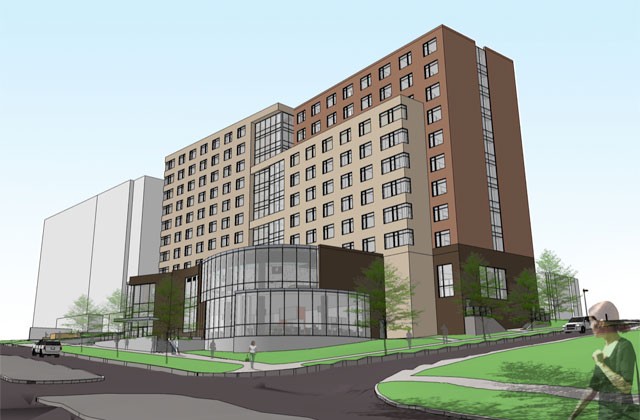We'd like your input - recent projects, photo/s, renderings, and expert insight - on an important article we're working on for our Jan 2013 issue:
HIGHER EDUCATION: Residence Halls, Student Unions, and ‘Quality of Life’ Factors in the Halls of Ivy
With total costs exceeding $50,000 at many colleges/universities, and with U.S. student debt nearing $1 trillion, will institutions be forced to cut back on "quality of campus life" buildings: residence halls that rival the Ritz, student unions and refectories that go well beyond the basics of bed and board, recreation centers that may seem over the top in their amenities? What about other "quality of campus life" buildings?
We're not talking about basic classroom, science & technology, or administrative buildings here. We're interested in those structures that are not, strictly speaking, essential to the curriculum or administration of the institution - those facilities that serve to enhance the "quality of campus life."
The essential question: Have colleges and universities gone too far with these structures? Or does competition for top students, institutional pride, or some other factor make it essential that institutions of higher learning keep raising the bar? And who's going to pay for these facilities?
Please send project information, PDFs, photo/s, renderings, and related information to our Contributing Editor, Susan Bady (susanbady@sbcglobal.net).
Please also let Susan know the name and contact info (email, phone, office location) of your top expert on higher-ed facilities.
Deadline: Due to the Thanksgiving holiday, we'd like to get these materials by Friday, Nov 16, if possible.
Thanks for your help, and BD+C looks forward to working with you on this important article. +
Related Stories
| Feb 23, 2011
The library is dead, long live the library
The Society for College and University Planning asked its members to voice their thoughts on the possible death of academic libraries. And many did. The good news? It's not all bad news. A summary of their members' comments appears on the SCUP blog.
| Feb 23, 2011
Data center trends: green design, technology upgrades
While green data centers will continue to be a trend within the industry, technology is also driving infrastructure upgrades that have never been seen before, according to the 2011 Data Center Technical Market Report from Environmental Systems Design. The report also includes an overview of the national data center market, construction costs, blackouts and disaster prevention, and site selection.
| Feb 23, 2011
“School of Tomorrow” student design competition winners selected
The American Institute of Architecture Students (AIAS) and Kawneer Company, Inc. announced the winners of the “Schools of Tomorrow” student design competition. The Kawneer-sponsored competition, now in its fifth year, challenged students to learn about building materials, specifically architectural aluminum building products and systems in the design of a modern and creative school for students ranging from kindergarten to sixth grade. Ball State University’s Susan Butts was awarded first place and $2,500 for “Propel Elementary School.”
| Feb 23, 2011
Barbie's newest career: Architect
Mattel is introducing Architect Barbie this fall, following a campaign that started in 2002 to give the iconic blond a design job. The doll comes in a signature pink outfit, but if she's truly hoping to pass an an architect, shouldn't she be wearing all black?
| Feb 23, 2011
Green building on the chopping block in House spending measure
Bryan Howard, Legislative Director of the U.S. Green Building Council, blogs about proposed GOP budget cuts that could impact green building in the commercial sector.
| Feb 23, 2011
Architecture Billings hold steady after two months of improving conditions
After showing positive momentum during the fourth quarter of 2010, the Architecture Billings Index (ABI) slipped almost four points in January. The January ABI score was 50.0, which is down from a reading of 53.9 the previous month, but still reflects stable demand for design services. Any score above 50 indicates an increase in billings.
| Feb 22, 2011
LEED Volume Program celebrates its 500th certified Pilot Project
More than 500 building projects have certified through the LEED Volume Program since the pilot launched in 2006, according to the U.S. Green Building Council. The LEED Volume Program streamlines the certification process for high-volume property owners and managers, from commercial real estate firms, national retailers and hospitality providers, to local, state and federal governments.
| Feb 22, 2011
HDR Architecture names four healthcare directors
Four senior professionals in HDR Architecture’s healthcare program have been named Healthcare directors.











